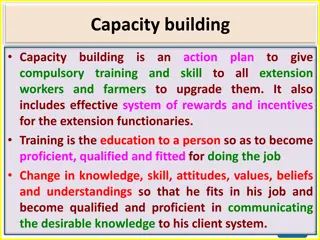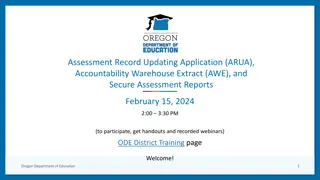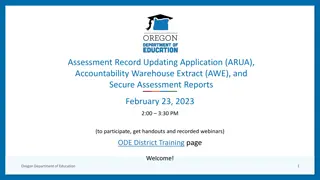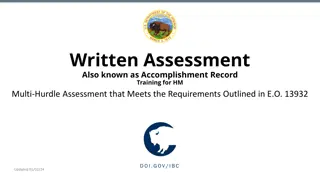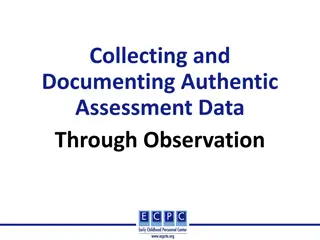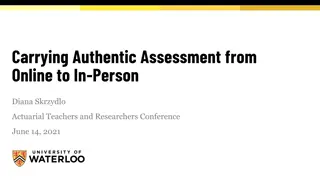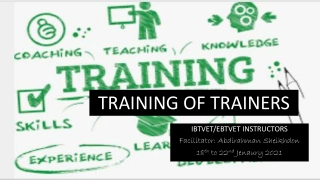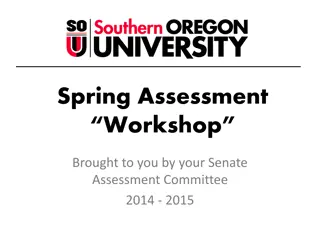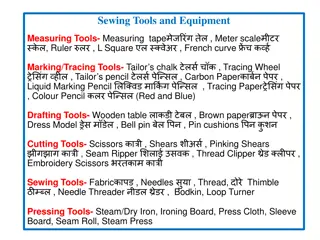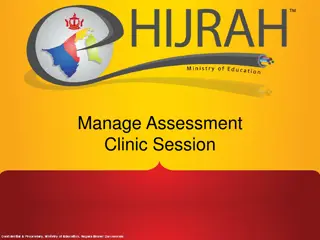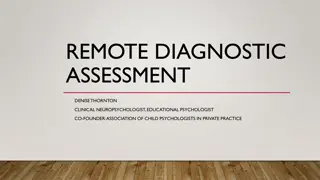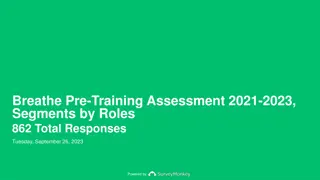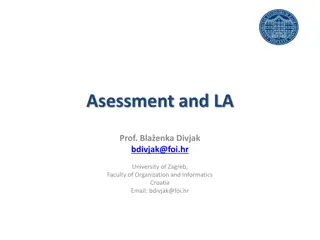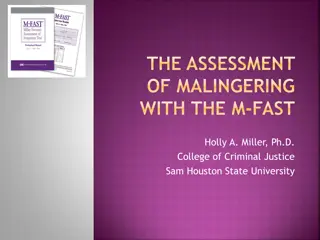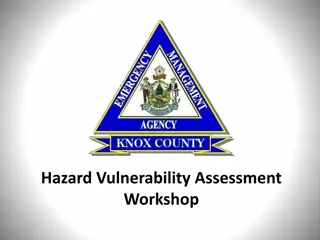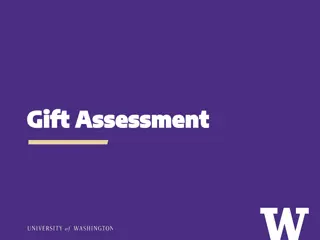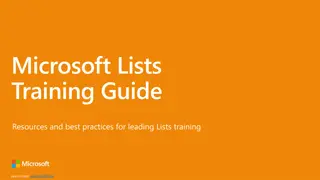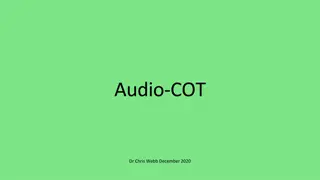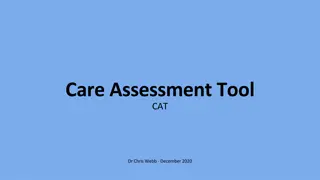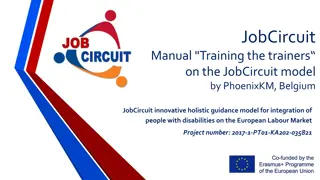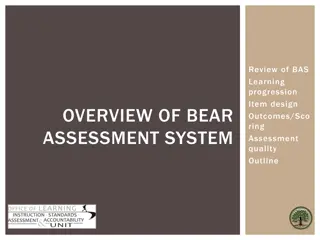Assessment Methods & Tools: An Overview for Effective Training
Explore various assessment methods and tools crucial for training effectiveness, including direct observation, simulation, portfolio, and written assessments. Understand the pros and cons of each method to make informed decisions on training evaluations.
Download Presentation

Please find below an Image/Link to download the presentation.
The content on the website is provided AS IS for your information and personal use only. It may not be sold, licensed, or shared on other websites without obtaining consent from the author. Download presentation by click this link. If you encounter any issues during the download, it is possible that the publisher has removed the file from their server.
E N D
Presentation Transcript
ASSESSMENT METHODS & TOOLS Alexandru Hozoc, MET expert
Content poursuivront un d veloppement durable gr ce aux meilleurs services possible, tant sur terre qu en mer et dans les airs 1. Remember? 2. Assessment methods 3. Assessment tools
Remember? (Training + Assessing) cycle + Time = Competence spiral 2D 3D
Content poursuivront un d veloppement durable gr ce aux meilleurs services possible, tant sur terre qu en mer et dans les airs 1. Remember? 2. Assessment methods 3. Assessment tools
2. Assessment methods Direct observation of operational work Simulation Portfolio Written assessment
2. Assessment methods Direct observation of operational work Most authentic assessment method for OJT PROs Opportunities for authentic contexts. Allows trainees to demonstrate their work to an authentic audience. Allows for the integration of complex skills. CONs Difficult to set up and administer, especially with a large number of trainees.
2. Assessment methods Simulation An assessment method for OJT applicable in almost any situation PROs build an environment/model behaving similarly to real world CONs describing the situation sometimes difficult initial financial investment (expensive) complete and accurate technical limitations
2. Assessment methods Portfolio A very complex assessment method for OJT PROs Allows trainees to work over an extended period of time to incorporate revisions. Allows for trainees craftsmanship, pride and personal embellishment. CONs Judging what has been learned is not always evident from looking at products. Difficult to assess individual contributions when the product is a group product.
2. Assessment methods Written assessment An assessment method for OJT applicable mostly for checking K & U PROs Allows for a standardized administration to large groups of trainees. Useful for assessing individual trainees. CONs Difficult to assess skills through paper-and-pencil measures.
Content poursuivront un d veloppement durable gr ce aux meilleurs services possible, tant sur terre qu en mer et dans les airs 1. Remember? 2. Assessment methods 3. Assessment tools
3. Assessment tools Checklist Simulator Case studies Tests
3. Assessment tools Checklist PROs authentic CONs may be difficult to prepare reusable may take some time to apply In depth evaluation
3. Assessment tools Simulator PROs (almost) real workplace CONs costly investment reusable scenarios must be fully detailed objective and reliable
3. Assessment tools Case studies PROs comprehensive CONs may take time to get prepared cover lots of topics may take time to go through big amount of data are needed
3. Assessment tools Tests (objective) PROs standardization of evaluation CONs time consuming in making reusable time consuming in correcting for any group dimension






